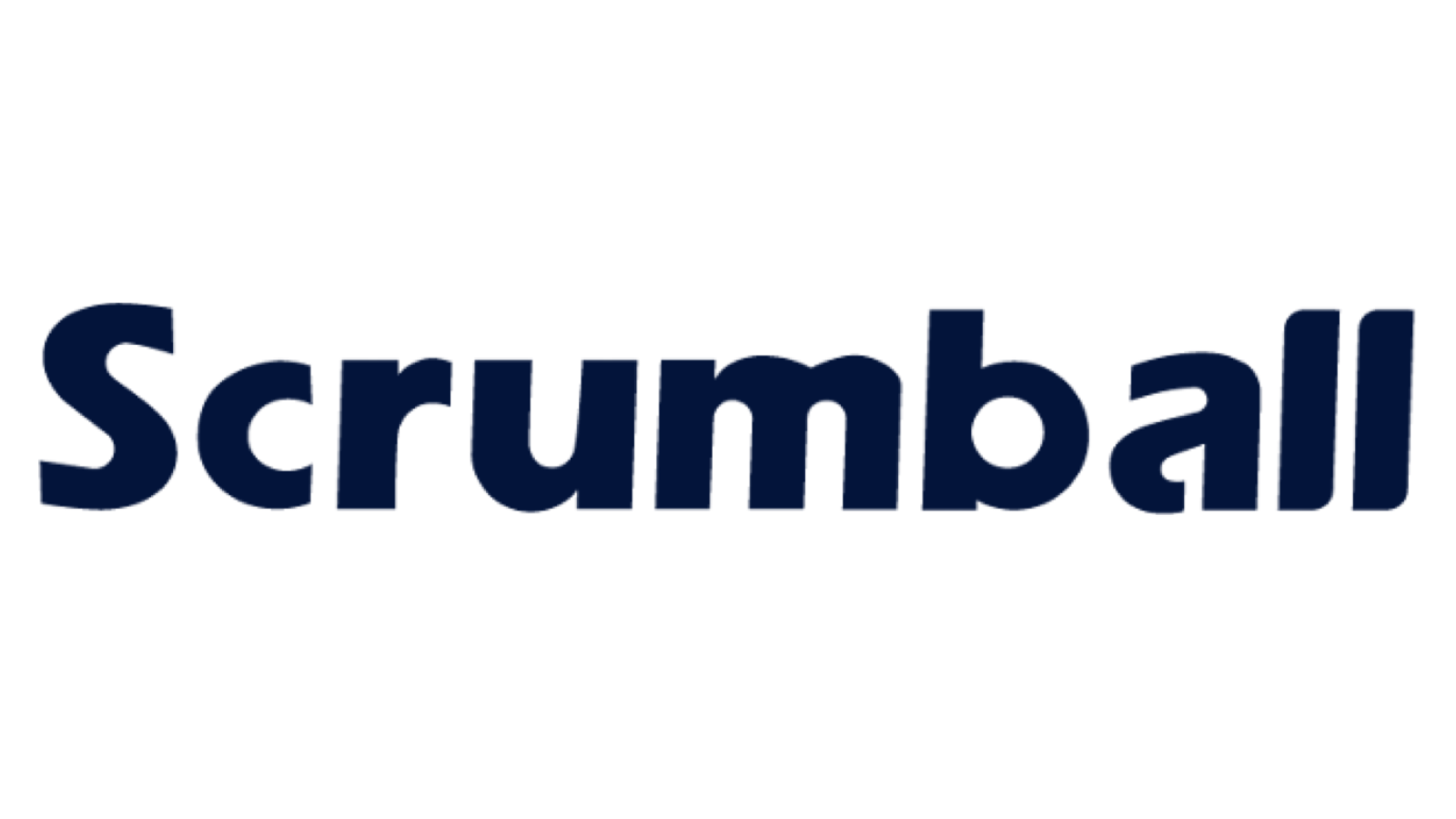How to Use CRM for Effective Marketing Campaigns in 2025

In 2025, CRM is revolutionizing how you approach marketing. It’s no longer just a tool for managing contacts—it’s your secret weapon for creating campaigns that truly connect. Did you know 89% of marketing organizations now rely on CRM? That’s because it helps you segment customers, personalize outreach, and track performance like never before. With CRM and campaign management tools, you can make smarter decisions and boost ROI. Plus, 80% of consumers prefer personalized recommendations. If you want to stay ahead in this competitive landscape, leveraging CRM is no longer optional—it’s essential.
What is CRM and Why It Matters for Marketing in 2025
Understanding Customer Relationship Management (CRM)
Customer relationship management, or CRM, is more than just a tool—it’s your marketing powerhouse. At its core, CRM helps you manage customer interactions and data. It organizes everything from contact details to purchase history, giving you a clear picture of your audience. But in 2025, CRM has evolved into something much bigger. It now integrates advanced features like AI and analytics to help you understand your customers better and create campaigns that resonate.
Here’s what makes CRM essential for marketing campaigns today:
| Core Functionality | Description |
|---|---|
| Sales Force Automation | Automates tasks like lead generation and sales forecasting. |
| Marketing Automation | Handles email campaigns, social media marketing, and event management. |
| Customer Service and Support | Manages inquiries, complaints, and service requests. |
| Customer Data Management | Stores and organizes customer details, preferences, and purchase history. |
| Analytics and Reporting | Provides insights to guide smarter marketing decisions. |
With these capabilities, CRM empowers you to streamline your marketing efforts and focus on what matters most—your customers.
The Role of CRM in Modern Marketing Campaigns
CRM has transformed how you approach marketing campaigns. It’s no longer just about storing data; it’s about using that data to drive results. Over the past decade, CRM systems have embraced AI and analytics, making them smarter and more effective. For example, targeted emails created through CRM segmentation see a 14.32% higher open rate. Personalized emails? They deliver six times higher transaction rates. These numbers show how CRM helps you connect with your audience in meaningful ways.
By leveraging CRM, you can create campaigns that feel personal and relevant. It’s like having a marketing assistant that knows your customers better than anyone else.
Key Trends in CRM and Campaign Management for 2025
The future of CRM is all about innovation. In 2025, you’ll see trends that make your marketing even more powerful:
- AI integration gives you deeper insights into customer behavior.
- Hyper-personalization tailors campaigns to individual needs.
- Omnichannel strategies ensure a seamless experience across platforms.
- Customer journey mapping helps you identify pain points and improve interactions.
- Social CRM uses social media to engage with customers and gather feedback.
These trends aren’t just buzzwords—they’re game-changers. By staying ahead of these developments, you can ensure your marketing campaigns remain effective and competitive.
Key Features of CRM for Marketing Campaigns

Customer Segmentation for Targeted Campaigns
Customer segmentation is one of the most powerful features of a CRM. It allows you to group your audience based on shared traits like demographics, purchase history, or behavior. Why does this matter? Because when you know your audience better, you can create targeted campaigns that truly resonate. For example, instead of sending the same message to everyone, you can tailor your marketing to specific groups. This approach improves engagement and boosts satisfaction.
Here’s how CRM makes segmentation easy:
- It collects and organizes customer data, including buying patterns and preferences.
- It helps you identify unique segments, like frequent buyers or first-time customers.
- It simplifies the process of crafting campaigns that align with each group’s interests.
By focusing on customer segmentation, you can deliver marketing campaigns that feel personal and relevant.
Creating Personalized Email Campaigns with CRM
Personalized email campaigns are a game-changer, and CRM makes them effortless. With CRM, you can target specific individuals or groups with emails tailored to their preferences and actions. Imagine sending a birthday discount to a loyal customer or recommending products based on past purchases. These small touches can make a big difference.
Here’s what CRM brings to the table:
- It centralizes customer data, making it easy to analyze trends and preferences.
- It helps you craft emails that resonate, leading to higher engagement and loyalty.
- It streamlines the process of managing email campaigns, saving you time and effort.
When you use CRM for personalized email campaigns, you’re not just sending messages—you’re building relationships.
Automating Marketing Campaigns for Efficiency
Automation is the secret to running efficient marketing campaigns. With CRM, you can automate repetitive tasks like email scheduling, follow-ups, and lead nurturing. This frees up your time to focus on strategy and creativity. Plus, automation ensures consistency, so no customer falls through the cracks.
Here’s how CRM automation works:
- It segments your audience and sends tailored messages automatically.
- It tracks performance metrics, helping you refine your campaigns.
- It manages leads, scoring them based on engagement and prioritizing high-potential ones.
By automating your marketing campaigns, you can work smarter, not harder, while delivering a seamless experience to your audience.
Using Analytics to Track Campaign Performance
Tracking your marketing campaigns is easier when you use CRM analytics. It gives you the tools to measure performance and make smarter decisions. You can see what’s working and what’s not, all in real time. This means you can tweak your campaigns on the fly to get better results.
Here’s how CRM analytics can help you improve your campaigns:
- Segment your audience based on demographics and behavior for more personalized campaigns.
- Refine your messaging and content using insights from customer data.
- Track customer journeys to create better lead nurturing strategies.
- Monitor campaigns in real time and adjust them for better engagement.
- Boost your ROI by targeting the right audience with optimized strategies.
Imagine running a campaign and instantly knowing which emails are getting opened or which ads are driving clicks. CRM analytics makes this possible. It’s like having a crystal ball for your marketing efforts. You can stop guessing and start making data-driven decisions that lead to success.
Integrating CRM with Other Marketing Tools
Your CRM becomes even more powerful when you integrate it with other marketing tools. This integration creates a seamless flow of data, helping you optimize customer journeys and make informed decisions. It’s all about working smarter, not harder.
Here are some best practices for integrating CRM with your tools:
- Track performance metrics like open rates, click-through rates, and conversion rates directly in your CRM.
- Align your sales and marketing teams to improve how you connect with prospects and customers.
- Organize prospecting and retention activities to streamline your workflow.
When you unify your tools, you get a complete view of your customer’s journey. This helps you prioritize your efforts and deliver a better experience. Plus, it boosts your ROI by ensuring every part of your marketing strategy works together.
Integrating CRM with tools like email platforms or social media schedulers isn’t just convenient—it’s essential. It saves time, reduces errors, and gives you the insights you need to create winning campaigns.
Step-by-Step Guide to Using CRM for Marketing Campaigns
Setting Clear Goals for Your Marketing Campaigns
Before diving into CRM, you need to set clear goals for your marketing campaigns. Without a roadmap, it’s easy to lose focus. Start by following the SMART framework:
- Specific: Define exactly what you want to achieve.
- Measurable: Decide how you’ll track success.
- Achievable: Make sure your goals are realistic.
- Relevant: Align them with your broader business objectives.
- Timely: Set a deadline to keep things on track.
For example, instead of saying, “We want more sales,” aim for something like, “Increase sales by 20% in the next three months through targeted marketing campaigns.” This clarity helps you stay focused and measure progress effectively.
Also, don’t forget to involve your team. Build a cross-functional group that includes marketing, sales, and IT. This ensures everyone is aligned and working toward the same objectives.
Pro Tip: Clear goals not only guide your efforts but also help you maximize ROI by focusing on what truly matters.
Collecting and Organizing Data in Your CRM
Your CRM is only as good as the data you feed it. Start by collecting information directly from your target customers. Use methods like:
- Surveys sent via email or SMS.
- Customer preference centers where subscribers can share details.
- Direct interactions, such as emails or live chats.
Once you’ve gathered the data, organize it within your CRM. Create categories for demographics, purchase history, and communication preferences. This structure makes it easier to find and use the information later.
Remember, clean data is key. Regularly update and remove outdated or duplicate entries to keep your CRM running smoothly.
When your data is well-organized, you can unlock the full potential of your CRM for effective marketing.
Segmenting Your Audience for Better Targeting
Audience segmentation is where the magic happens. By dividing your target customers into smaller groups, you can create more effective marketing strategies. Why? Because people respond better to messages that feel personal.
Did you know 63% of people get annoyed by generic emails? On the flip side, nearly 80% engage with promotions tied to their past purchases. This shows how segmentation can improve your campaigns.
Here’s how to do it:
- Use your CRM to group customers by demographics, behavior, or purchase history.
- Tailor your messaging to address each group’s specific needs.
- Test different approaches to see what resonates best.
"Segmentation significantly increases our understanding of our audience’s pains and challenges... This directly improved our business through better conversion rates and brand image."
By focusing on segmentation, you’re not just marketing—you’re connecting. And that connection leads to better results and stronger relationships.
Designing Personalized Campaigns Using CRM Insights
Creating personalized campaigns is easier when you use CRM insights. Your CRM gives you a treasure trove of data about your customers, helping you design campaigns that feel tailored and relevant. Here’s how you can do it step by step:
- Determine your key customer segments: Use your CRM to analyze customer behaviors and attributes. Identify which groups are most suitable for personalized marketing.
- Design personalized experiences for each segment: Build strategies that align with the unique needs of each group. For example, offer exclusive discounts to loyal customers or recommend products based on past purchases.
- Identify the data you need to launch your campaign: Ensure you have all the necessary information, like customer preferences and purchase history, to create effective personalized content.
You can also take it further by timing your campaigns perfectly. Use CRM data to send messages when your audience is most likely to engage. Retargeting ads are another great way to remind customers about your offerings. With CRM, you’re not just marketing—you’re building connections through personalized experiences.
Automating Campaign Workflows with CRM Tools
Marketing automation is a game-changer, and CRM tools make it seamless. By automating workflows, you can save time and focus on strategy. Here’s how you can use CRM for automation:
- Segment your audience: Group customers based on demographics or behavior to send targeted messages.
- Send personalized campaigns: Use CRM data to craft messages that resonate with your audience.
- Automate lifecycle marketing: Set up triggers for emails based on customer actions, like abandoned carts or completed purchases.
- Integrate CRM with marketing automation tools: Sync your CRM with email platforms or social media schedulers for a unified system.
- Track performance: Use analytics to refine your campaigns and improve ROI.
For example, you can set up automated email sequences that welcome new customers or re-engage inactive ones. With CRM, you can ensure every customer gets the right message at the right time.
Monitoring and Optimizing Campaign Results
Tracking your campaigns is crucial for success. CRM analytics helps you monitor performance and make data-driven decisions. Here are the key metrics you should watch:
| Metric | Description |
|---|---|
| Sales Revenue | Measures how well your campaigns drive sales. |
| Customer Lifetime Value | Shows the total revenue you can expect from a customer over time. |
| Customer Acquisition Cost | Evaluates how much you spend to acquire a new customer. |
| Churn Rate | Tracks the percentage of customers who stop engaging with your brand. |
| Customer Retention | Measures how many customers stay loyal to your business. |
| Lead Conversion Rate | Indicates how many leads turn into paying customers. |
Use these insights to tweak your campaigns. For instance, if your churn rate is high, focus on improving customer retention strategies. If your lead conversion rate is low, refine your messaging. CRM analytics ensures you’re always optimizing for better results.
Examples of Successful CRM-Driven Campaigns

Case Study 1: A Small Business Boosting Sales with Personalized Email Campaigns
Small businesses often face challenges when it comes to standing out in crowded markets. But with CRM, you can create personalized email campaigns that truly connect with your audience. Let’s look at two examples:
- A financial services firm used CRM to automate onboarding emails. This simple step led to a 30% increase in account setup completion within the first week.
- A B2B software company leveraged CRM for targeted event marketing. By tailoring their emails to specific customer segments, they saw a 25% increase in open rates and a 35% boost in conversions compared to generic emails.
These examples show how CRM helps you deliver the right message to the right people. Personalized emails not only improve engagement but also drive better results for your marketing campaigns.
Case Study 2: A Large Enterprise Enhancing Customer Engagement with Omnichannel CRM Strategies
Large enterprises often have complex customer bases. To keep up, they rely on omnichannel CRM strategies to enhance customer engagement. Take Nike, for example. They’ve integrated in-store digital product scanning and virtual try-ons into their CRM system. This approach has increased digital sales and improved customer satisfaction.
Starbucks is another great example. They use location-based personalization and mobile ordering through their CRM. This strategy has led to higher mobile orders and stronger customer retention.
These companies prove that when you combine CRM with omnichannel strategies, you can create seamless experiences that keep customers coming back.
Key Takeaways from CRM Success Stories
What can you learn from these success stories? Here are some key lessons:
- Use CRM to organize and manage your content assets.
- Track and analyze campaign performance to refine your strategies.
- Personalize your marketing efforts to build stronger customer relationships.
- Integrate CRM across all your marketing channels for a unified view of the customer journey.
- Leverage data-driven insights to optimize your marketing spend and boost ROI.
By applying these lessons, you can create marketing campaigns that are not only effective but also efficient. CRM gives you the tools to understand your audience, deliver personalized experiences, and achieve measurable results.
Choosing the Right CRM for Your Business
Evaluating CRM Features for Marketing Campaigns
Choosing the right CRM software can feel overwhelming, but focusing on the right features makes it easier. Not all CRMs are created equal, and the best one for your marketing crm needs will depend on your goals and workflows. Here’s what you should look for:
- Integration capabilities with your existing marketing tools.
- A user-friendly interface that doesn’t require hours of training.
- Strong data security measures that comply with industry standards.
- Scalability to grow alongside your business.
- A vendor with a solid reputation and excellent customer support.
These features ensure your crm marketing efforts run smoothly and efficiently. For example, a CRM that integrates seamlessly with your email platform saves you time and reduces errors. Similarly, a scalable CRM ensures you won’t outgrow the system as your business expands.
Tip: Always test the CRM’s demo or trial version to see if it aligns with your team’s needs before committing.
Comparing Top CRM Tools for 2025
With so many options available, how do you pick the best CRM for your marketing campaigns? Let’s compare some of the top CRM tools for 2025:
| CRM Tool | Key Features | Pricing (per user/month) |
|---|---|---|
| Nimble | Unified contact management, integrates with Office 365 and G Suite, task management, pipeline tracking | $24.50 (annual), $29.90 (monthly) |
| Salesforce | Customizable platform, advanced analytics, lead management, AI capabilities | Starts at $25 (Essentials), up to $300 (Unlimited) |
| HubSpot | User-friendly interface, all-in-one marketing suite, free tools for contact management | Free (basic), starts at $45 (Starter) |
Each tool has its strengths. If you’re looking for a budget-friendly option with basic features, HubSpot might be your best bet. For advanced analytics and AI-driven insights, Salesforce is a strong contender. Nimble is ideal for small teams needing streamlined contact management.
Pro Tip: Match the CRM’s features to your specific marketing crm goals to get the most value.
Best Practices for Implementing CRM Successfully
Once you’ve chosen your CRM software, implementing it correctly is crucial. Follow these best practices to ensure success:
- Choose a CRM that fits your business needs.
- Set clear, measurable goals for your crm marketing efforts.
- Create a detailed implementation plan to guide the rollout.
- Customize the CRM to align with your workflows.
- Train your team thoroughly to maximize adoption.
- Leverage automation and AI to improve efficiency.
For example, setting measurable goals like “increase email open rates by 15% in six months” helps you track progress. Customizing the CRM ensures it supports your unique processes, while proper training empowers your team to use it effectively. Automation can handle repetitive tasks, freeing up time for strategic planning.
Note: A well-implemented CRM doesn’t just support your marketing—it transforms it. Take the time to get it right, and you’ll see the results in your campaigns.
Using CRM for your marketing campaigns in 2025 isn’t just a smart choice—it’s a game-changer. It helps you target specific customer groups, uncover audience trends, and centralize data for better decision-making. With CRM, you can create personalized content, refine social media strategies, and improve campaign performance.
To integrate CRM effectively, start by evaluating your needs and choosing tools that align with your goals. Set up data synchronization, customize workflows, and test everything to ensure smooth functionality. Don’t forget to clean up your data regularly and use automation to save time. These steps will help you unlock CRM’s full potential and take your marketing to the next level.
Remember, CRM isn’t just about managing data—it’s about building stronger connections with your audience. Start today and see the difference it makes in your campaigns!
FAQ
What is the main benefit of using CRM for marketing campaigns?
CRM helps you organize customer data, making it easier to create personalized campaigns. It improves targeting, boosts engagement, and increases ROI. By understanding your audience better, you can deliver messages that truly resonate and build stronger connections.
How does CRM improve customer retention?
CRM tracks customer interactions and preferences, helping you identify their needs. You can use this information to offer tailored solutions, resolve issues quickly, and maintain consistent communication. These efforts strengthen relationships and encourage loyalty.
Can CRM integrate with other tools I already use?
Yes! Most CRM systems integrate with tools like email platforms, social media schedulers, and analytics software. This integration streamlines workflows, centralizes customer data, and ensures all your marketing efforts work together seamlessly.
Is CRM suitable for small businesses?
Absolutely. CRM helps small businesses manage customer relationships efficiently. It organizes crm data, automates repetitive tasks, and provides insights to improve campaigns. Even with limited resources, you can deliver personalized experiences and compete effectively.
How do I ensure my CRM data stays accurate?
Regularly update your CRM by removing outdated or duplicate entries. Train your team to input customer data correctly. Use automated tools to sync information across platforms. Clean data ensures your campaigns are effective and your decisions are data-driven.
See Also
Utilizing User-Generated Content For Successful Marketing Campaigns
Essential Influencer Marketing Platforms To Explore In 2024
Expert TikTok Influencer Marketing Techniques For 2024
